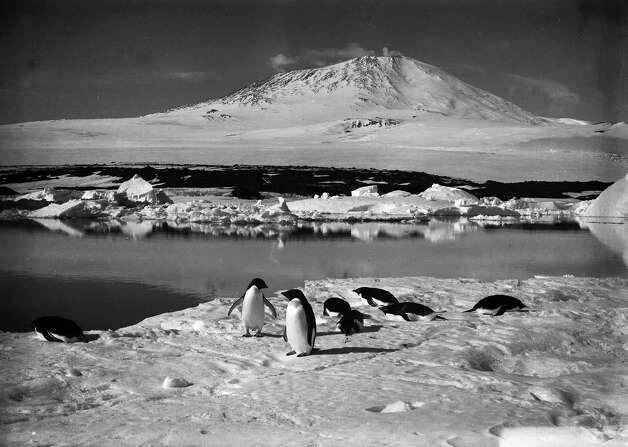'Penguin Peggy' has seen 17 species of the birds in their native habitats
Posted: April 30, 2013 - 10:43am | Updated: April 30, 2013 - 10:52am
Bob.Mack@jacksonville.com-Peggy
Wilchek talks to three boys from Orange Park Elementary School who were
on a field trip to the Jacksonville Zoo and Gardens.
Bob.Mack@jacksonville.com-A
log is kept on the feeding habits of each of the penguins in the
exhibit, which enables zookeepers to monitor their health.
By David Crumpler
She’s known as “Penguin Peggy” to some, “The Penguin Lady” to others.
A young visitor to the Jacksonville Zoo and Gardens even dubbed her a “penguin geek” after hearing her talk about the birds.
It’s not just her love of penguins that earned Peggy Wilchek the
affectionate nicknames, but her encyclopedic knowledge of them as well.
And her travels. The Jacksonville resident, who does volunteer work
at the zoo’s penguin exhibit, has seen all 18 species of penguins in
their native habitats. It’s taken her from Antarctica to South Africa to
New Zealand and other places around the globe.
“Five years and six trips,” Wilchek said, during a recent morning at
the zoo. She called it her “dirty day,” because she spends part of the
time scrubbing down and disinfecting the rooms where the zoo’s 11
penguins stay at night.
She also “plays secretary” to staff members such as Mike Taylor,
senior bird keeper, by keeping track of the penguins’ fish intake as
they’re fed. It’s part of the process of monitoring their overall
health.
“When I heard the zoo was getting penguins three years ago, I was
thrilled,” she said. She had been a volunteer at the zoo for a year by
then.
Wilchek, 70 and a retired nurse, said penguins captured her heart in
2001 during her first trip to Antarctica. “They make me smile,” she
said. “They make me laugh.”
Nothing compares to seeing them in their natural environment, she
said. And even if Wilchek were content to go from zoo to zoo around the
world, she wouldn’t be able to see all the species, since not all are on
display in captivity. (Some, such as the Galapagos and Yellow-Eyed
penguins, either aren’t adaptable or don’t do well in captivity, Gen
Darnell, the zoo’s supervisor of birds, said.)
Magellanic penguins make up the zoo’s penguin population. The
medium-size, South American penguin breeds in coastal Argentina, Chile
and the Falkland Islands, which is where Wilchek first saw them in their
native habitat.
Her favorites, however, are King penguins, “because they’re the most social,” followed by Royals, which are also quite social.
The pursuit of penguins has given Wilchek a new focus in her great love of travel.
Before going to Cape Town in 2002, for example, she contacted the
South African Foundation for the Conservation of Coastal Birds, which
rescues and rehabilitates African penguins.
“I asked them what I could bring,” she said. “They said toothbrushes,
newspapers and towels” to help with the cleanup of penguins injured in
oil spills. Wilchek arrived with 100 toothbrushes, which are used to
help remove the oil coating the birds.
Wilchek said her husband, John, is a “good sport” who accompanies her on penguin journeys. “He carries the luggage,” she joked.
Her license plate reads “Penguin 17.” She completed her “penguin
quest” in 2006 when there were 17 designated species of penguins.
Since then, the Rockhopper, once treated as a single species, has
been separated into two, the Northern and Southern — both of which she
has seen. But she’s happy with the number on her tag, she said, and “I’m
sticking to it.”
She loves sharing her knowledge of penguins with visitors at the zoo,
where she typically spends about seven hours a day once a week as a
volunteer. “It’s a dream job. I go home tired, but my heart feels good,”
she said. “And I feel good that my work allows the keepers to get other
things done.”
The first thing she’s likely to tell you is that most penguins don’t live where it’s cold.
“The No. 1 question I get from tours is, ‘How cold is the water?’ ”
What most people don’t realize, she said, is that all penguins live
south of the equator, and “That’s why most can’t live where it’s cold.
If you see a picture of a penguin and a polar bear together, you know
it’s been Photoshopped.”
She found she couldn’t contain her enthusiasm during a trip to the
Singapore Zoo in March. While visiting the penguin exhibit, she looked
around to see if there were any zoo officials nearby before asking
visitors, “Does anybody have any questions?”
source




























































